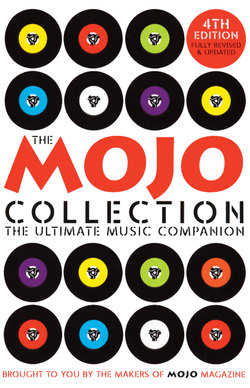Читать книгу The Mojo Collection - Various Mojo Magazine - Страница 42
На сайте Литреса книга снята с продажи.
Davy Graham And Shirley Collins Folk Roots, New Routes A seemingly bizarre pairing of folk song’s English rose and an inventive young guitar genius.
ОглавлениеRecord label: Topic
Produced: Ray Horricks
Recorded: Decca Studios, London; January 1964
Released: March 1964
Chart peaks: None (UK) None (US)
Personnel: Shirley Collins (v, g, banjo); Davy Graham (g); Gus Dudgeon (e)
Track listing: Nottamun Town; Proud Maisrie; The Cherry Tree Carol; Blue Monk; Hares On The Mountain; Reynardine; Pretty Saro; Rif; Mountain; Jane Jane; Love Is Pleasin’; Boll Weevil Holler; Hori Horo; Bad Girl; Lord Greggory; Grooveyard; Dearest Dear
Running time: 44.16
Current CD: Fledgling FLED3052
Further listening: The Graham album Folk, Blues And Beyond (1964) took folk guitar deeper into alien worlds of modern jazz, blues, Indian and even Arabic music. Further examples can be heard on the excellent compilation Fire In The Soul (1970).
Further reading: www.daveygraham.org; www.shirleycollins.co.uk
Download: Not currently legally available
Graham was always one of the British folk scene’s maverick characters. While he was instantly lumped in with the scene because he played an acoustic guitar and worked London’s Soho club circuit – so fashionable in the early ’60s – he was forever in search of a broader canvas. A compulsive traveller and an avid musical adventurer (perhaps because his father came from the Isle of Skye and taught Gaelic and his mother hailed from Guyana), he was heavily into blues, modern jazz, Indian and Arabic music, playing it all on the guitar while barely out of his teens.
It was Shirley Collins’s former husband Austin John Marshall who suggested that his inventive interpretations of Indian ragas might provide an intriguing accompaniment for one of Shirley’s traditional tunes, Pretty Saro. Graham, it transpired, was a big Collins fan (he also loved Robert Johnson, Charlie Parker, Mary Wells and Rimsky-Korsakov) and joined her onstage at a concert at London’s Mercury Theatre in July 1964. The audience may have been baffled, but the results were extraordinary enough for the pairing to dive into the studio at the first opportunity. Many purist British folkies were appalled, but after a 2,000-mile journey trekking through the southern states of America collecting blues, gospel, jazz and folk songs with Alan Lomax, Shirley’s ears were nothing if not open to different musical styles, and she threw herself into the project with a relish that startled many.
The fusion, light years ahead of its time, didn’t sell particularly well but was massively influential, opening the way for other inventive guitarists such as John Martyn. Even now, in a time when world music is only a high street store away, the otherworldly settings of traditional warhorses like Nottamun Town, Love Is Pleasin’ and Reynardine still sound extraordinary.
